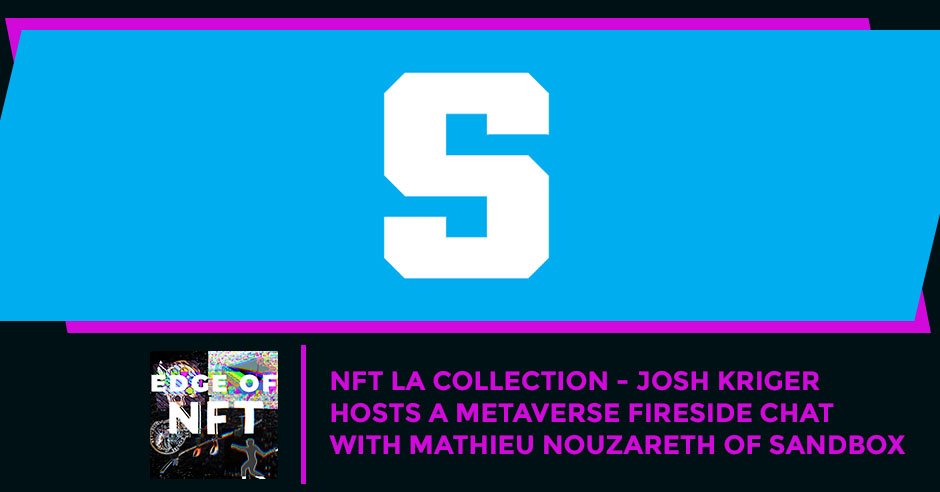
The Edge of NFT team just pulled off a stellar inaugural NFT LA event featuring the crème de la crème of Web 3, and leveraging the vibrant entertainment scene of Los Angeles. Kicking off this series of interviews is a session with co-host Josh Kriger as he facilitates a mainstage talk with Mathieu Nouzareth of Sandbox. Mathieu answers questions about their decentralized metaverse platform and expounds on the vision of Sandbox as the world of meta expands. Don’t miss out on more exciting NFT news by tuning in!
—
Listen to the podcast here
NFT LA Collection – Josh Kriger Hosts A Metaverse Fireside Chat With Mathieu Nouzareth Of Sandbox
Along with my incredible cohosts, Jeff and Josh, as well as a huge crew of rock star team members we assembled, we have pulled off a stellar inaugural NFT LA event featuring the crème de la crème of Web 3.0 and leveraging the vibrant entertainment scene of Los Angeles. This episode is one of a series featuring content from the NFT LA event, which happened from March 28th to the 31st, 2022. This session is among those where one of us cohosts facilitated a main stage talk or breakout panel. This features my cohost, Josh Kriger, conducting a metaverse fireside chat with Mathieu Nouzareth of The Sandbox. Enjoy.
—
I’m excited to have this next gentleman up here. Mathieu from The Sandbox. Thank you so much for joining us. In a lot of ways, The Sandbox is a metaphor for our entire industry. When we built this conference, we built it thinking about what’s going on in the industry and how we can all choose our adventure. You have created that opportunity for everyone, so we appreciate that.
I’m super excited to be here.
Likewise. To set the framework for the conversation, what is The Sandbox? Thank you, Arthur and Seb, for creating such a great name that represents what we’re doing here in Web 3.0.
The Sandbox is a metaverse based on the blockchain. It’s decentralized. It’s a place where you can go. You have an avatar. It’s avatar-centric. You can play, engage with players, be entertained and eventually do all sorts of things that you see in real life that are coming to the metaverse and The Sandbox.
You’ve been in the gaming industry for years since 2000 and the crypto industry since 2017. What’s different about this moment in time?
We have seen it. This is the moment where crypto in general, crypto gaming and NFTs are taking off because the market and the audience are finally here. Even so, it’s just the beginning. It’s this defining moment. We will go back in time maybe in twenty years and think of 2021 and 2022 as the real burst of the crypto, NFT and metaverse industry.
How have these NFTs shifted what’s possible when it comes to the fundamental concept of blockchain gaming and metaverses like The Sandbox?
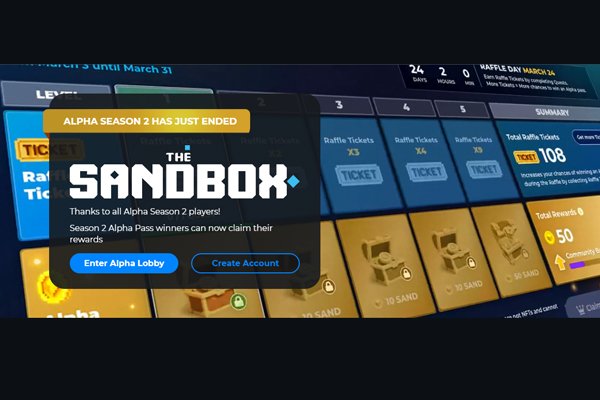
Sandbox: We are not the first metaverse. You have had other metaverses before but they were all centralized Web2-centric.
We are not the first metaverse. You have had other metaverses before but they were all centralized and Web 2.0-centric companies. With NFTs and Web 3.0 utilization, it creates new opportunities for creators and players that were not possible before. This is what’s truly unique about us and a bunch of other decentralized metaverses.
Where are you in your journey in terms of Web 3.0? Where does Sandbox fall out at this moment in time and what’s next?
We are both far and still at the beginning. The company started in 2018 at the worst of times for the crypto industry. That was when it was called the crypto winter, if you remember.
Everyone was hightailing it out of town.
Also, crypto gaming was barely a thing. Kudos to the founders for moving forward and going full steam on crypto gaming at the time. We started to build the product in 2018 and build a metaverse, which is essentially a large-scale, social and real-time gaming entertainment experience. It takes a lot of time and resources. You need all sorts of engineers, designers and project managers. It takes time. We are far and we’re ahead of a lot of people but it’s still the very beginning. We’re just getting started. We think we have years and decades of innovation and growth ahead of us.
You finished Season 1.
We had the first season in December 2021. We are going by seasons. We’re still in Alpha mode. It lasted for 30 days. We had Season 2 starting at the beginning of March 2022. Go and download it on Sandbox.game. You can download the game and have fun. We’re going to have another five seasons in 2022.
That’s exciting. It’s important to understand that for a lot of folks, The Sandbox came out of nowhere but this is a long time coming. There’s a lot of work that goes into creating this Web 3.0 economy that we can all benefit from now.
It’s an overnight success that took ten years in the making. The company even existed even before The Sandbox we know now. I’ve been doing games for a while and making successful games. Usually, nobody can pull it off the first time. You need years of polishing, practice and iteration until you come up with something that works and people want.
This Web 3.0 economy has its challenges too. We heard on day one that Jiho dropped a bomb about a major hack that occurred. I’m curious how The Sandbox looks at the risk and benefits of decentralization and how you need to balance those considerations around protecting people, especially when we’re talking about mainstream adoption, which is a theme of this conference.
There is always this tension about going and being fully decentralized, which makes it a bit harder for ordinary users if you have to own your keys. The seed words, for example, are not in 3D for a lot of people but it’s also very safe as opposed to going maybe less decentralized and making it easier for users but a bit riskier. It’s a hard balance to find. I hear a lot of people saying, “Users don’t care about decentralization,” until they do and you have a hack like this one.
You lose $625 million.
I don’t know if you remember. Years ago, people were saying, “Users don’t care about privacy,” until they do and you have all the backlash that came maybe over the years. When users understand the trade-off between security and ease of use, then they’re going to get more and more aware of those trade-offs and make their choice. Decentralization is a good thing for everybody. We need to make it easier for people to onboard.
Speaking of onboarding, there’s an interesting distinction that you have made in terms of having a play-and-earn economy as opposed to a play-to-earn economy, which is a common term you used. Why is that?
There is a lot of pushback in the gaming industry about NFTs and gaming in general. The rationale behind this is that they’re telling us, “It’s just a cash grab and a way for companies to make more money.” While it may be true for some companies, those game makers and publishers want to make it in the long term. The only way to succeed is to work on the experience, on the fun first and monetization is a consequence of this. I’ve never seen a gaming company succeeding in the long-term that hasn’t focused first on engagement retention and then monetization. This is what we’re doing at The Sandbox. We’re putting the fun and the experience first. This is the only way to last 5 years, 10 years or decades.
How are you doing that?
We’re doing it by having a good team, building experiences and getting feedback from users.
The mechanics are 5%.
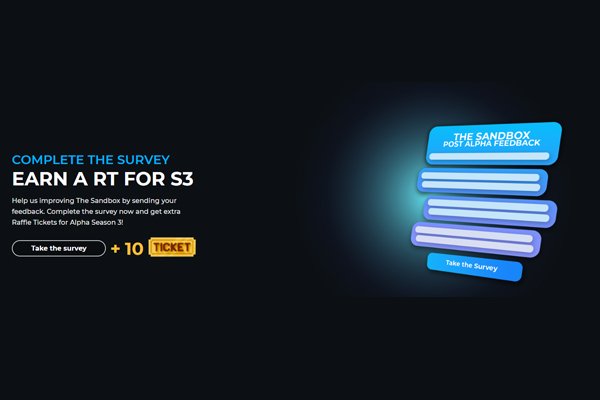
Sandbox: All the big brands and companies are asking themselves, “What is an NFT?”
Our take rate is only 5%. Think of us as an app store in a way and we only take 5%. We redistribute the vast majority of the proceeds to the community, the creators and the people who stake SAND if you want to stake SAND and the users.
Let’s get a little bit more specific because these guys have done some fun collabs in 2022. You’ve worked with some iconic brands like The Walking Dead, on one hand, Care Bears and The Smurfs on another and Snoop Dogg. That sounds like a pretty fun calendar to manage.
It is fun but it’s also a lot of work behind the scenes. It’s fair to say that all the big brands and companies are asking themselves, “What is an NFT? What is the metaverse? What should I do?” It’s because we are the leading metaverse that they come to us and want to partner with us. You mentioned a few names in gaming. Gaming is vertical. That’s taking off in the metaverse. It’s a very natural fit to have gaming experiences inside the metaverse. We also have entertainment and signing deals with artists and musicians. Digital fashion and fashion, in general, are becoming a big thing in Web 3.0 and the metaverse.
Give us a little glimpse of that world. What are we talking about with Care Bears versus Snoop Dogg? How does this idea of having a Sandbox where both types of iconic brands fit into it? How does that all work?
There are different types of experiences. With Care Bears or the deal we have with Ubisoft, for example, is we are bringing their game inside the metaverse or The Sandbox. It’s going to be typical games or mini-games with challenges, quests, rewards, leveling up and these kinds of things or the typical game mechanics. When we work with a brand like Snoop Dogg, for example, we’re focusing a bit more on the entertainment side.
We have announced we’re going to have a virtual concert with Snoop Dogg in the next few months. What I find interesting is that we’re going to go beyond. I can’t reveal what it’s going to be but it’s going to be more than just an avatar of Snoop Dogg coming on stage and singing. The metaverse enables new types of narrative and enables us to be much more creative, even for concerts and more. There are different types of verticals and experiences. Fashion is something else even.
What do you see as The Sandbox for big brands? Let’s talk about upstart brands too and creators in this new Web 3.0 economy. Let’s zoom out a little bit.
For small companies and individuals, it’s super easy to download all tools. You can already build experiences, assets and logic. The barrier of entry for trying and experimenting is very low. I would encourage everyone to come and play with the creators’ tools. Big companies are sometimes setting up teams themselves. We partner with them and build it for them. What they can do in the metaverse depends on who they are. Some companies just buy a piece of land to get started.
They’re also educating themselves. Some companies go a bit further and use the building more like showrooms. They want to show their product or services. Some are going one step further. They want to build social experiences where they engage with their audience or customers. The next level, for big companies, is about setting up shop with the idea of transacting and engaging the customer directly inside The Sandbox.
To clarify, in The Sandbox, everything is in an NFT.
Including the land, everything is based on NFTs.
What are the types of land that people can purchase and the types of experiences that folks are talking to you about creating?
We have decided to have a finite amount of land. There are 166,000 or so lands. We already sold 2/3 of it. We only have 50,000 lands to sell.
It looks like some folks have an opportunity here to still get in The Sandbox. It’s still early. That’s what we like to say.
First of all, you don’t need to own land to experience The Sandbox. Until we have the next season, you can already download the game. You don’t need to own land. It’s the same thing for creators. You don’t need to own land but if you do, you can buy a small piece of land. The entry price is around $10,000 for the small parcel, which is 2.5 acres. It is like a New York City block, to give you an ID. If you want bigger land, it becomes much more expensive. The biggest land sells for millions of dollars.
What happens after this?
We’re going to shut off the client experience and reopen it in 5 or 6 weeks but if you’re a creator, you can still use our tool and build avatars, NFTs and buildings. It’s open 24/7.
I’m going to ask another question or two but I also want to give the audience a chance to ask questions. For everyone in the audience that’s exploring Web 3.0, how do you manifest your vision of this new The Sandbox in your life and what you’re doing in the space?
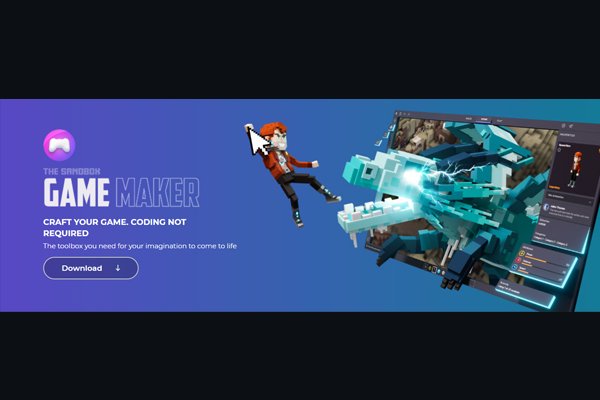
Sandbox: Web2 companies will become legacy business, probably surviving for a very long time. Web3 companies are really the ones that are going to really take off and grab a big piece of the market.
The vision of The Sandbox is to help everyone to fulfill their creativity. Everyone is creative, whether they know it or not. By providing tools for the creators, they can build new types of experiences. We will be blown away by what creators and users do as well. For us, the metaverse is this place where you can build new types of experiences that are not possible in the real world, on the web or on mobile either. It’s something new that hasn’t been possible before.
The incentives can be different.
For the first time, we are creating a circular economy with the SAND token where if you’re a creator, you can monetize your creation, engage with your audience, resell it and own it. This is the big difference between Web 2.0 centralized metaverses like Roblox, Minecraft, Fortnite and others as opposed to Web 3.0 metaverse companies.
Do we have any questions from the audience for Mathieu?
How do you attribute the overall value of The Sandbox and the token to what you’re doing? What’s your vision as far as the overall appreciation of The Sandbox over time?
That’s not financial advice.
I’m not a financial advisor but the thing is, we don’t value it ourselves. The SAND token is already publicly traded on 45 exchanges around the world. In the US, it’s in Gemini and Kraken and more exchanges around the world. It’s not us. It’s a marketplace. You have supply and demand. The exchange rate of the SAND token on a fully diluted basis is worth $11 billion. That’s for the token. For the land, it’s the same thing. We don’t make the price. We sell land. We call it primary sale.
We’re opening up. Every few weeks, we sell a few pieces of land ourselves. We set the price and we have had the same price in SAND since the inception of the company. It’s 1,000 SAND for regular land and it’s around 4,500 SAND for premium lands. If you go on OpenSea and you find land, you can buy. It’s supply and demand. We don’t come up with the price. If you aggregate all the value of all the lands to The Sandbox, it’s valued at a bit more than $2 billion but we don’t set the prices. It’s the market.
Was there another question over here at some point?
Thanks for being here. When Meta announced that they were getting into the metaverse, this was a huge transformation. That’s when we saw SAND, MANA and everything blow up. As a business, what’s your vision? As Meta continues pushing down this road, how does something like The Sandbox continue to compete or what niche are we continuing to carve out?
First of all, we know very little about what Meta will do in the metaverse. I don’t know what they’re going to do. My belief is that Web 2.0 companies are going to try to enter the fray. Some of them already have a metaverse but most of them approach the metaverse purely from an immersive experience perspective, which is also part of what we view.
They are lacking the Web 3.0 components, ownership and decentralization. It’s going to be nearly impossible for the incumbent or those Web 2.0 centralized companies to change the Web 2.0 engine that is so entrenched and deep in their business model, culture and what they have been building over the past, for some of them.
Changing the Web 2.0 engine via the Web 3.0 engine is almost impossible. It’s like changing the engine of a plane when it flies, especially at the scale of the big companies. My view is that they will still be successful. Don’t get me wrong. I admire what they have done. They have amazing products and a great business model but they will become legacy businesses surviving for a very long time. I see Web 3.0 companies are the ones that are going to take off and grab a big piece of the market.
This is coming from a guy that built on Web 2.0. You’ve built several successful gaming companies using Web 2.0 technology but you’re all-in on Web 3.0.
I’m all-in on Web 3.0. I’m very passionate about crypto. I don’t think Web 3.0 is going to replace Web 2.0. It’s just going to go beyond and make the whole thing bigger.
Are there other questions from the audience?
Here’s a quick follow-on there to the incumbent Web 2.0 providers that are moving into this space. Are you going to steal the march by working on interoperability? Are you already speaking with Decentraland and pick-your-flavor metaverse? What does that conversation like?
We very much believe in being interoperable. We don’t claim we’re going to be the only metaverse in town. We think it’s going to be a multi-metaverse world where you have different value propositions and maybe different niches for different people. Even by land size, we only have 166,000 pieces of land. We don’t even want to be the biggest by land size.
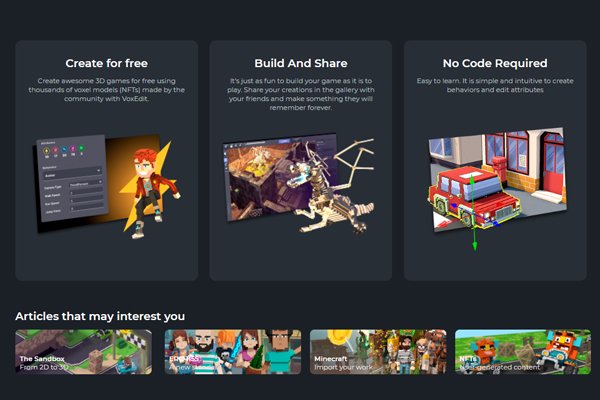
Sandbox: NFTs are like metadata. This will go in which metaverse you choose to go to. It’s up to each metaverse to decide how they’re going to render NFTs minted on other platforms. But we’re big proponents of being interoperable.
We just want to be the most exciting and the place where we have other creators, the most exciting people and brands and the culture coming into The Sandbox. With that being said, we are open to working with others. It’s not our decision. If you own an NFT, it can go from your metaverse to another one.
It’s part of the standard but the NFT is almost like metadata. It is information about what your avatar is, the rarity trait, the color of the eyes, the color of the hair or the wearables. This will go wherever metaverse you choose to go. It’s up to the metaverse in question to decide how they’re going to render it because we have this voxel style.
If you’ve seen The Sandbox, it’s very pixelated and it’s by choice. If you go to Decentraland, it’s much more realistic and some other metaverses are going all the way to being hyper-realistic. It’s up to each metaverse to decide how they’re going to render NFTs minted on other platforms. We’re a big proponent of being interoperable.
On that note of interoperability, how do different blockchains fit into that? We’re talking about something that’s not easy. When we talk about building bridges to an interoperable world, how long will that take for true interoperability from different blockchains and metaverses? Where are we on that journey?
Between metaverses, as long as they are built on Ethereum, it’s going to be easier. It’s still going to take some time because you have to build those connectors or those transformation tools to transform an NFT from one metaverse to another one. We’re migrating to Polygon. It’s also going to make it easier and cheaper for people to build, mint, buy, create and sell NFTs.
It’s going to be easy if other metaverses are going on Polygon or other L2s. Many are talking about other L1 chains like Solana, Avalanche or others. It’s going to take a bit more time. Eventually, we are agnostic. We are going to go where the users are going. The traction is on Ethereum and Polygon. We’re staying there and we will see what users want in the next few years.
Fast forward to the future, when we’re in our fifth year of NFT LA, what’s going to be happening with Sandbox in this amazing space?
Sandbox is on desktop, PC and Mac. We will be on more platforms. Mobile is obvious. I strongly believe that AR and VR are about to take off. AR and VR have been coming in the past years but it’s coming now. It’s for real. I can feel and see it taking off. Big tech players are coming in by the end of 2022 or early 2023 with new goggles or glasses. Hopefully, The Sandbox will also be available on those platforms.
I was at a dinner with a Web 3.0 person. They took a picture of the meal we were eating with their glasses. I was like, “It’s here.”
It’s coming.
Mathieu, this has been amazing. Thank you so much for hanging out with us. I appreciate your time. I’m excited about the future of The Sandbox. There’s a Sandbox for all of you in the audience. Thank you so much.

Sandbox: We are agnostic. We are going to go where the users are going right now.
Thank you.
—
We hope you enjoyed that episode. Make sure to visit EdgeOfNFT.com/discord to continue the conversation. Also, visit EdgeOfNFT.com/ar to plant a 3D augmented reality tree right from your mobile device inspired by our forthcoming Living Tree NFT collection, which will offer you the hottest alpha and participatory benefits within our ecosystem. The Living Tree NFT collection will also plant over 100,000 real trees.
We have reached the outer limit at the show. Thanks for exploring with us. We’ve got space for more adventures on this starship, so invite your friends and recruit some cool strangers that will make this journey all so much better. How? Go to Spotify or iTunes, rate us and say something awesome. Go to EdgeOfNFT.com to dive further down the rabbit hole. Be sure to tune in next time for more great NFT content. Thanks again for sharing this time with us.
Important Links
- NFT LA
- The Sandbox
- Ubisoft
- Gemini
- Kraken
- OpenSea
- Decentraland
- Ethereum
- Polygon
- Solana
- Avalanche
- EdgeOfNFT.com/discord
- EdgeOfNFT.com/ar
- Spotify – Edge of NFT Podcast
- iTunes – Edge of NFT Podcast
About Mathieu Nouzareth

In 1995, I founded WebConcept, one of the first e-business consulting company in France. With my brother Romain, we built a business which became one of the leaders on the market by 1999, when WebConcept was sold to the IconMedialab company of Sweden (euronext: lbi), a leader in it’s field.
As President of IconMedialab in France, I continued the company’s development until 2001.
From 2001 to 2008, I was the President of Boonty.com, one of the largest casual game platform in the world. We had offices in New York, Paris, Singapore, Tokyo and Beijing. The company was sold to Nexway in December 2008.
In 2006, we created a pioneering social casual game platform, cafe.com, now called Is Cool Entertainment and was listed on the Euronext-Alternext stock market and later non acquired by Hachette.
I started FreshPlanet in New York in September 2009. FreshPlanet is a publisher and developer of social and mobile games. FreshPlanet is known for its megahit game SongPop. FreshPlanet was acquired by Gameloft/Vivendi in December 2018.
I am also the co-founder of a new crypto mining company in Canada called CCU.
I am a graduate of the Management School of Grenoble, and hold an MBA from the Lubin School of Business in New York.
Specialties: Serial start up entrepreneur, mobile, gaming, user acquisition, blockchain, crypto currencies

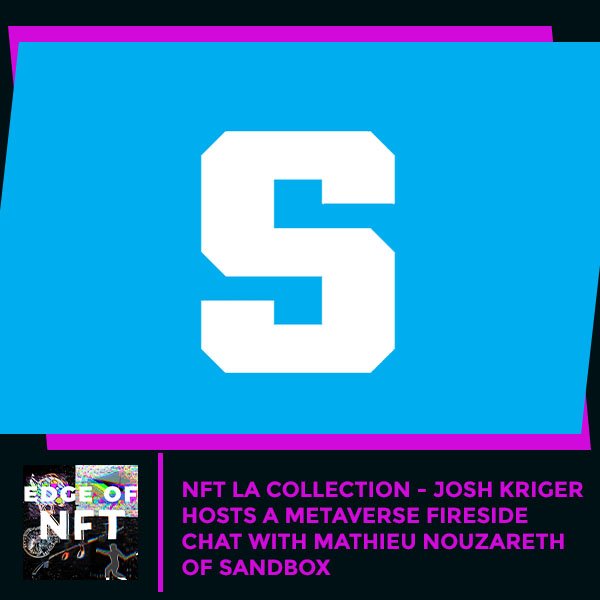
.webp)

.jpg)
.jpg)
.jpg)
.webp)


.svg)









